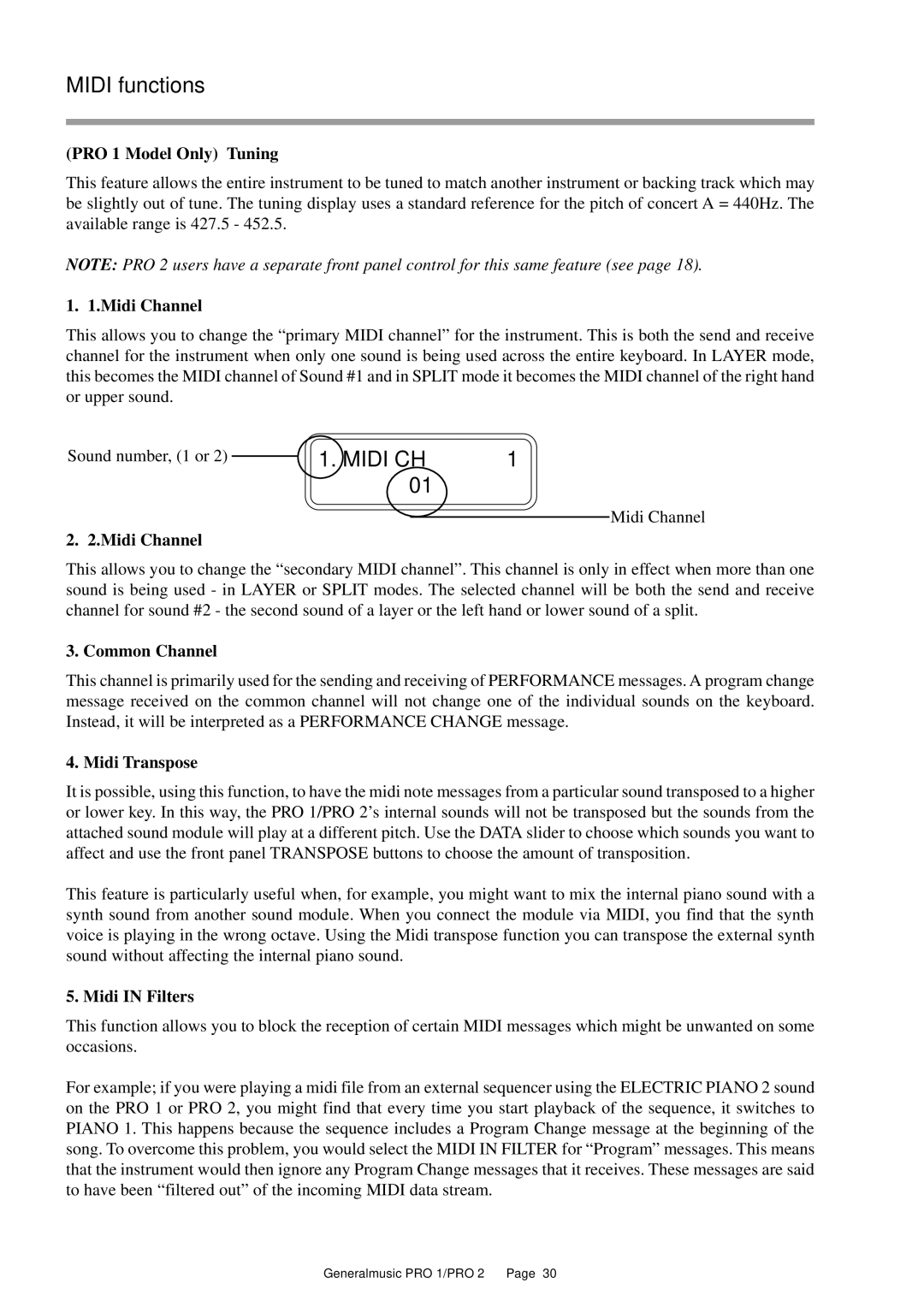
MIDI functions
(PRO 1 Model Only) Tuning
This feature allows the entire instrument to be tuned to match another instrument or backing track which may be slightly out of tune. The tuning display uses a standard reference for the pitch of concert A = 440Hz. The available range is 427.5 - 452.5.
NOTE: PRO 2 users have a separate front panel control for this same feature (see page 18).
1. 1.Midi Channel
This allows you to change the “primary MIDI channel” for the instrument. This is both the send and receive channel for the instrument when only one sound is being used across the entire keyboard. In LAYER mode, this becomes the MIDI channel of Sound #1 and in SPLIT mode it becomes the MIDI channel of the right hand or upper sound.
Sound number, (1 or 2)
2. 2.Midi Channel
1. MIDI CH | 1 |
01 |
|
Midi Channel
This allows you to change the “secondary MIDI channel”. This channel is only in effect when more than one sound is being used - in LAYER or SPLIT modes. The selected channel will be both the send and receive channel for sound #2 - the second sound of a layer or the left hand or lower sound of a split.
3. Common Channel
This channel is primarily used for the sending and receiving of PERFORMANCE messages. A program change message received on the common channel will not change one of the individual sounds on the keyboard. Instead, it will be interpreted as a PERFORMANCE CHANGE message.
4. Midi Transpose
It is possible, using this function, to have the midi note messages from a particular sound transposed to a higher or lower key. In this way, the PRO 1/PRO 2’s internal sounds will not be transposed but the sounds from the attached sound module will play at a different pitch. Use the DATA slider to choose which sounds you want to affect and use the front panel TRANSPOSE buttons to choose the amount of transposition.
This feature is particularly useful when, for example, you might want to mix the internal piano sound with a synth sound from another sound module. When you connect the module via MIDI, you find that the synth voice is playing in the wrong octave. Using the Midi transpose function you can transpose the external synth sound without affecting the internal piano sound.
5. Midi IN Filters
This function allows you to block the reception of certain MIDI messages which might be unwanted on some occasions.
For example; if you were playing a midi file from an external sequencer using the ELECTRIC PIANO 2 sound on the PRO 1 or PRO 2, you might find that every time you start playback of the sequence, it switches to PIANO 1. This happens because the sequence includes a Program Change message at the beginning of the song. To overcome this problem, you would select the MIDI IN FILTER for “Program” messages. This means that the instrument would then ignore any Program Change messages that it receives. These messages are said to have been “filtered out” of the incoming MIDI data stream.
